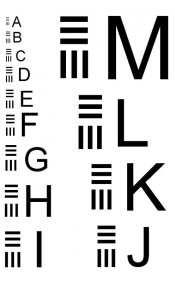BetterSense
Member
Yes, print several USAF1951 resolution charts and pin them to a wall so one ends up in the center of your image and another in the corner.
This is not a flawed suggestion, it just utterly fails to address my question.
My question: "explicitly to avoid doing (obvious thing A), will (possibly equivalent thing B) work?"
Everyone:"why don't you do (obvious thing A)?"
I am doing experiments on an optical bench. Because of the size of my detector and nature of my monochromatic light source, I have only a small angle to work with. I have to test off-off - axis resolution by moving my small detector to the edge of the "film gate", or equivalently, tilting the lens to accomplish the same thing. At that point, if I wanted to fully emulate a camera, I would tilt the detector at the same angle of the lens, causing inverse square falloff, and then to fix the fact that the resolution chart now appears distorted on the detector, I also have to tilt the resolution chart by the same angle. I currently do not see the point of doing either of these 2 last things since the only thing I seem to "gain" is uneven lighting across the detector, plus the fact that the left and right sides of the resolution chart are now different distances.











